Links to Flash Media
= search the website for related materials
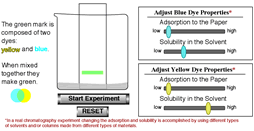 |
Virtual
Chromatography - |
|
 |
Column Chromatography Demo - A demonstration of what happens during a column chromatography experiment. |
|
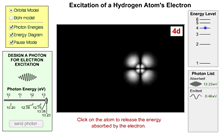 |
Electron Excitation - |
|
 |
Breaking a Single Bond - |
|
 |
Forming a Single Bond - Explore the role of energy in bond formation. Adjust bond strength and temperature to see how it affects this simple reaction in which a single bond is formed. |
|
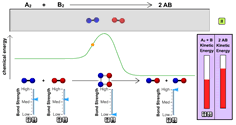 |
Making and Breaking Bonds - Explore the role of energy in chemical reactions. Adjust bond strength and temperature to see how it affects this reaction in which bonds are both formed and broken. |
|
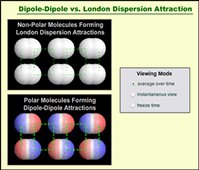 |
Dipole vs. London Dispersion Attractions - See a dynamic representation of the fleeting instantaneous dipoles formed by non-polar molecules and compare them to dipole-dipole attractions between polar molecules. |
|
| Density Meter - Explore the density of a gas by adjusting its volume and the mass of the individual gas molecules. A bar graph reads total mass, volume, and density. |
||
| Counting
Significant Digits - Practice counting significant digits with an unlimited number of random problems. |
||
| Calculating
with Significant Digits - Practice doing an unlimited number of randomly generated addition, subtraction, multiplication, and division problems. The correct answer must be given in with the correct number of significant digits. |
||
| Measurement
Practice - Practice recording measurements of the correct precision using an unlimited number of randomly generated rulers and graduated cylinders. |
||
 |
Atomic
Structure - See several models of an atom and understand how we used simplified models. |
|
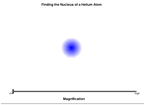 |
Finding
an Atom's Nucleus - Puts the size of the atom's nucleus in correct perspective, letting you zoom down into the atom, eventually finding the tiny nucleus. |
|
| Types
of Bonds - Explores how different types of bonds are formed due to variations in the electronegativity of the bonded atoms. The distortion of the orbitals (not calculated, just approximated), and the polarity of the bond is also displayed. |
||
| Strength of Bonds - Using an atom attached to a spring you can probe the strength of different types of bonds by seeing how strongly the atom is attracted to another atom fixed in the middle of the screen. The stronger the bond the harder it is to pull the atoms apart. |
||
| Lewis Dot Tutorial - Allows you to build single bonded molecules using Lewis Dot structures. The atom can be rotated by clicking on any of its electrons. There is also an animation of double and triple bonded Lewis Dot Structures. |
||
| Metal Model - Shows the random motion of electrons as they move from atom to atom in a metal. |
||
| Current
Flow - An illustration of current flowing through a wire. |
||
| Dissolving
Ionic Compounds - NaCl - Shows the dissociation of NaCl when dissolved in water. |
||
| Dissolving
Ionic Compounds - NaNO3 - Shows the dissociation of NaNO3 when dissolved in water. |
||
| Dissolving
Ionic Compounds - (NH4)2S - Shows the dissociation of (NH4)2S when dissolved in water. |
||
| Dissolving
Molecular Compounds - Sugar - Shows how the molecule sugar does not dissociate when dissolved in water. |
||
| Precipitation
Demo - Shows a precipitation reaction when solutions of NaCl and Pb(NO3)2 are combined. |
||
| Critical
Mass - Let's you explore how critical mass can be reached through density of nuclear material or amount of nuclear material. You can set up a matrix of fissionable atoms by describing how many and the distance between them. Then click on one atom to start the chain reaction. |
||
| Interactive
Graph of Energy Distribution Showing Boiling - You can adjust the temperature of, pressure on, and van der Waals forces of, a liquid to see how it affects the kinetic energy distribution of its molecules. A beaker of the liquid is shown and will boil if the conditions are right. |
||
| Charles'
Las - A piston is set up with a gas inside. As you adjust the temperature the molecules of the gas speed up or slow down, causing the gas to expand or contract. |